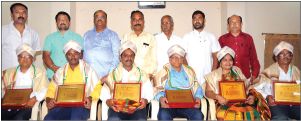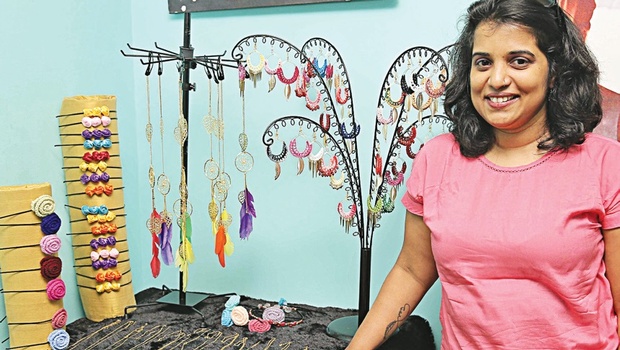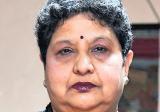Many years ago in Madras, reclining on an easy chair and chewing on a piece of clove, R.K. Narayan (RKN) quite uncharacteristically said: “Although I have built the Mysore house brick by brick, I carry no emotions, no nostalgia about it… In life one has to move on, you can’t simply dwell in the past,” recalls RKN’s grand-nephew, the journalist-turned-corporate manager Chetan Krishnaswamy, who recaptures life as it used to be at 15, Vivekananda Road, Yadavagiri, Mysore – 570020, in this writeup…
by Chetan Krishnaswamy
I don’t quite remember the details now, but oddly, that muggy afternoon, I thought I detected a streak of nostalgia beneath the veneer of cold pragmatism and bravado.

The true magnificence of RKN’s sprawling bungalow on 15, Vivekananda Road in Yadavagiri, Mysore, lies in the lively people who inhabited, or were associated, with it throughout its 60-plus years of existence.
In 1948, the scrubby land measuring 180 x 120 was bought from a local Shetty at the rate of around Rs. 2 per square yard. Narayan’s older brother R.K. Pattabhi had a share in it, too.
By this time, Narayan had already established himself as a writer and was attracting global acclaim.
Mysore’s famous Chief Engineer Shama Rao (who had built the famous Krishna Raja Sagar [KRS] Hotel and after whom a string of buildings are named in Mysore’s Vontikoppal, including the shopping complex on 3rd Main Road called Shama Rao building), who was retired by then, was given the contract to construct RKN’s house in 1949.
Narayan designed a large, roomy home that would accommodate his brothers, their wives and their children. By this time, the cartoonist R.K. Laxman, the other famous sibling, had already flown the coop and was building his reputation in distant Bombay.
The extended family which resided at Door Number 963, Lakshmipuram, comprised brothers R.K. Srinivasan and Pattabhi and their families apart from Narayan’s daughter Hemavathi (RKN’s wife Rajam had passed away suddenly in 1939).
Reigning over the household was Narayan’s mercurial mother Gynanambal — expert cook, chess champ and tennis player, all rolled into one.
The house was completed in 1952, with the griha pravesha being a grand affair. Among the guests was Soma, a blind mystic who lived atop Chamundi Hill and who had taken a liking for the family. On one occasion, the gifted Soma through his clairvoyant powers had accurately traced Laxman’s wife Kamala’s missing diamond ring, that had been swept away with the garbage.
And then came the unforeseen crisis: None of Narayan’s brothers were keen to relocate to Yadavagiri from the centrally located Lakshmipuram. This, despite the comforts of a large house.
In light of this new dilemma, Narayan settled into a peculiar routine: Every day after lunch he was driven in his Morris Minor to Yadavagiri by driver Rangappa.
In the unbroken silence of his house, Narayan wrote profusely. This was the phase in which he wrote two of his novels: The Financial Expert and Waiting for the Mahatma.
By about 5.30 pm, after lighting the lamp in the ‘puja room,’ Narayan would be back home in Lakshmipuram for his routine evening walk with brother Srinivasan. Eventually, for about a year, 15, Vivekananda Road was rented out to Henry C. Hart, a Visiting Professor of Political Science from the University of Wisconsin, on a monthly rent of Rs. 200. Hart was in India on a Fulbright Fellowship, with his wife in tow.
Their legacy was an elegant piece of furniture custom made for the house: wooden seating that skirted the entire semi-circular perimeter of the large living room. After many years of service, and in the wake of sustained onslaught from a riotous bunch of kids, that primarily included my cousins, the furniture slowly disintegrated.
One morning, 15, Vivekananda Road, had a surprise visitor.
The flamboyant actor Dev Anand accompanied by Yash Johar (Karan Johar’s father) had dashed to Mysore, after giving a day’s notice to Narayan. The actor was there to negotiate for the filming rights of The Guide.
Narayan’s starstruck nephews were directed to fetch a breakfast of idli-vada and dosas from Seshagiri’s hotel (Hotel Ramya now). After thoroughly enjoying the meal, Dev is said to have whipped out his cheque book and asked “How much?”
RKN feebly said,“I don’t know.”
Dev left after presenting the author with an advance of Rs. 5,000.
Finally, with the daughters of the house married and gone and brother Srinivasan moving out of Mysore in pursuit of government service, a hesitant Pattabhi gave in. Much to Narayan’s relief, Pattabhi moved to Yadavagiri with his wife and mother. Also in tow were Narayan’s young nephews R.S. Krishnaswamy and R.S. Jayaram, both studying at the Mysore’s National Institute of Engineering (NIE).
In 1973, Narayan’s mother Gynanambal passed away.
The large, two-storied house of around 5000 sq.ft. had five bedrooms with attached bathrooms. There was a spacious semi-circular living room with an array of windows that brought in the sunlight.
The dining hall, kitchen, an unusually huge store-room adjoining a ‘puja room’ formed another portion of the expansive house.
A winding, narrow flight of stairs led to Narayan’s airy room on the top floor.
The room was minimalistic, almost spartan in décor. Apart from a single cot, there was this heavy easy chair and a solid walnut table from Kashmir on which rested an assortment of books and papers.
In another corner Narayan displayed his interesting collection of miniature owls, which he had picked up during his travels. On a wooden bracket fixed to the wall rested the Filmfare award (which the writer had won for The Guide) and other memorabilia. That he never thought too highly of this award was another thing.
The room had a modest ante chamber where Narayan tucked away his veena. He played it well.
On the wall of his room was a framed picture of his late wife Rajam. He would regularly place a string of jasmine flowers on the frame every day. The room opened up to a cosy balcony, which was Narayan’s favourite spot. He sat there, hours on end, writing, watching the flitting birds and squirrels on the frangipani tree that majestically arched into the compound, scattering its canopy of green.
Sometimes he would meditate and recite a version of the Gayatri Mantra sitting here. Narayan had revealed to my aunt Rajani, Jayaram’s wife, that this particular Mantra was a revelation that was relayed to him from another spiritual plane.
The other room, which usually accommodated guests and other relatives who were on an extended stay, had an unusual revolving wooden shelf, which originally belonged to Narayan’s academic father R.V. Krishnaswamy Iyer. The shelf creaked and groaned under the weight of the thick hardbound classics, some of which were rare out of print editions.
The house had a garage which at one time held Narayan’s Mercedes Benz, a gift from a publisher which he subsequently disposed off. There were also two make shift ‘sheds’ that in the later years were used to park the other automobiles in the house.
In 1987, after Pattabhi’s death, Narayan travelled into Madras and the US, periodically coming into Mysore. From 1991 onwards, he started living in Chennai owing to his ill health. For many years, the empty house was taken care of by Narayan’s driver Krishnamurthy.
Sometime in early 2000, the house was leased out to the cousin of a very powerful Congress party politician. The influential tenant used it as an office-cum-residence, altering certain facets and progressively destroying the old world charm of the house.
At one point, he stopped paying the rent and refused to move out. The family seemed helpless…
One fine morning, suitably galvanised by Narayan’s son-in-law Chandrasekaran, who lives in Chennai, I strode into the house determined to take on the truant tenant.
After making us wait for a long time, the kurta-clad man came down and spoke to us in the most unfriendly manner, clearly indicating that he would leave the house when he felt the need to do so.
I left the house quite disappointed and reported the conversation back to Chandrasekaran. In a few months’ time, good sense prevailed and the man left the house but in complete disarray.
Today 15, Vivekananda Road, which stood forlorn, almost ghostly for years waiting patiently, uncomplainingly, for that fresh gust of wind to breathe again, has finally seen the light of the day with the Karnataka Government converting it into a museum. Now, once again one can hear the echoing laughter, the quibbles and the genius of four generations of an uncommon family that it has nurtured.
source: http://www.starofmysore.com / Star of Mysore / Home> Feature Articles / August 06th, 2016








